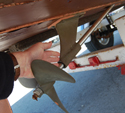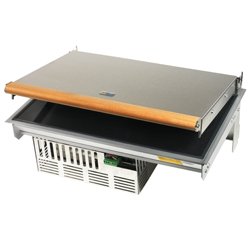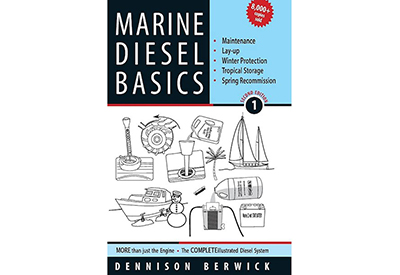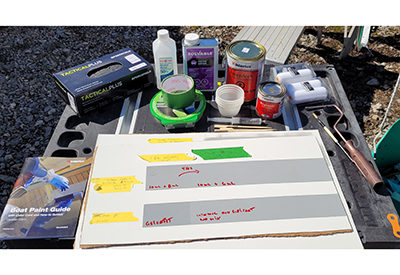Smart Charger Upgrade For As Little As $500

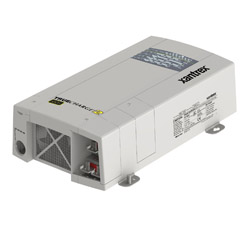 Nobody wants a failure in high season.
Nobody wants a failure in high season.
We interviewed Edward Saunders at Mastervolt about the new generation of smart chargers and he began by saying that electronics have a usable lifespan. Anyone with a 1995 or earlier cruisers may find their chargers are still working, but electrical components can fail; they fail suddenly and often without warning.
Think about the environment in your engine room. Edward pointed out that equipment in your engine room goes through extreme hot and cold cycles, experiences oil in the air, dust and dirt as well as spikes from shore power sources. Of course, the humidity in the engine room atmosphere is always an issue. Components can fail and leave a charger inoperable. Recently, home electronics product manufacturers have been saying that their equipment only has a ten-year lifespan. The point is that older battery charges probably need replacing anyway.
Then, with most pre-1995 cruisers, chances are that they have a ferro-resonant battery charger. These are generally big and heavy units and usually operate with an annoying buzzing sound. Unfortunately you cannot leave them turned on to maintain your charge levels as they will boil the batteries. In most cases a ferro-resonant charger will not charge the battery to its maximum potential either and another consideration is that the old type of chargers can have a "ripple effect" that decreases the lifespan of the batteries.
You need maximum power reserves on your boat because you have probably added equipment during the time that you have owned your boat so it is almost certain that your power needs have increased. That, in turn, means that you should increase the size of your battery bank to cope with the loads and that's another reason you'll need a new charger.
Almost all new boats that come with a battery charger will have a smart charger and it's well worth the comparatively small cost for older boats to move up. Examples of the new smart chargers come from companies like Charles, Guest, Maretron, Mastervolt, ProMariner, Victron and Xantrex.
Smart Charger Benefits
First and best, the smart chargers can be left on to maintain charging and maximum battery levels at all times. The smart charger provides power as needed. The newest ones are high-frequency chargers that are commonly available in sizes from 6 to 60 amps of output. New technology has allowed these chargers to become much smaller in size. Keeping the battery charge levels up results in extended life for the batteries. Although the cost of a charger like this could be $300-$500 plus installation, the life expectancy of the batteries can be increased substantially.
That alone, is a powerful financial justification for upgrading.
Among the new smart chargers are useful features that can compensate for hot or cold temperatures depending on where the battery is located, they can also change charging geometry resulting in the best possible charge and most of these new smart chargers will effectively work with absorbed glass mat and gel type batteries as well as the old style of flooded cell.
For smaller, high speed boats, Pro-mariner has some waterproof and also "ruggedized" units to handle the pounding in high performance bass boats.
The larger capacity and higher-end units are microprocessor-driven so you can change the charging process to best suit your battery choices. Control is through the LED or LCD displays on the unit.
Some units, like models from Xantrex, have an equalizer setting. As the condition of the battery declines, the equalization feature has a high-frequency "over voltage" cycle that essentially blows the sulfate off the plates. It basically cleans up the battery plates and restores some of the lost capacity. It's a great feature.
A primary feature of good smart chargers is the ability to distribute the charge current on demand to each battery bank as required. For example, a 30-amp charger connected to three battery banks where there is a house battery plus two cranking batteries might allocate 22 amps to the house bank, 6 amps to one of the other banks and only 2 amps to the remaining bank
Gary Young at Payne's Marine Group helped us research this article. Gary not only sells these, he upgraded to a Xantrex smart charger in his own boat. In addition to much better performance in battery charging and battery maintenance, the small size of the charger actually freed up enough space in his battery compartment that Gary was able to install larger capacity batteries to power his other upgraded equipment.
Your dealer will have a range of smart chargers and their technicians can guide you to the best choices for your boat. While you are at it, look at your whole 12-volt system, not just the charger.
Edward Saunders mentioned that, "We recommend that people use a smaller number of larger batteries. This will give you a better power supply."
Generally, it is best to limit the boat to no more than five batteries. Experience has shown that the internal resistance in each battery causes them to sort of "fight each other" and suffer premature failure when you have more than five batteries. Finally, it's a good idea to keep all of your batteries the same size.
Avoiding an unexpected, sudden charging failure should be enough to motivate most boat owners to replace older ferro-resonant chargers but the many other smart charger benefits are well worth the investment. Then, once you have a better onboard power supply, you can upgrade other equipment!

